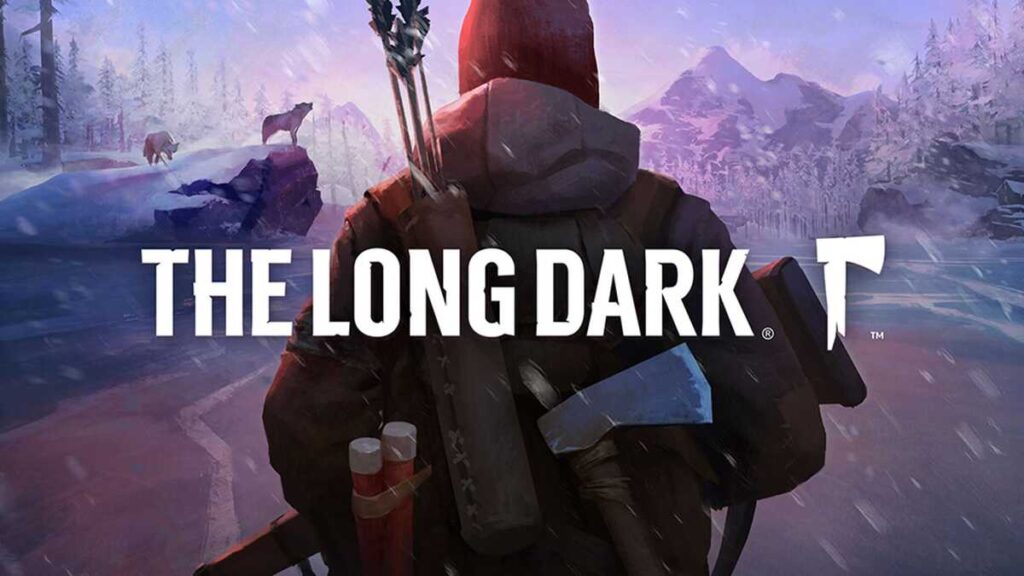In this The Long Dark game review, I look at a title that has stood the test of time since its launch in 2014. Developed by Hinterland Studio, The Long Dark puts you in the shoes of a survivor in a frozen Canadian wilderness after a plane crash caused by a strange geomagnetic event. No zombies or monsters here—just the harsh reality of nature, cold, hunger, and wildlife. With ongoing updates, including visual improvements in 2025, the game remains fresh for new and returning players. I played it on PC, and this review covers both story and survival modes to help you decide if it’s right for you. Let’s break it down step by step.
What is The Long Dark?
The Long Dark is a first-person survival game set in a post-disaster world where technology fails, leaving you to face the elements alone. You play as Will Mackenzie, a bush pilot, or in some parts as Dr. Astrid Greenwood. The core idea is simple: stay alive by managing basic needs like warmth, food, and rest. Unlike many survival games, it focuses on realism without supernatural threats. The world spans over 50 square kilometers of snowy landscapes, from abandoned towns to deep forests and mountains.
This setup creates a sense of isolation that pulls you in. You start with little gear, forcing quick decisions on what to carry or leave behind. The game has two main parts: the story-driven Wintermute mode with episodes, and the open-ended Survival mode where death is permanent. It also includes challenge modes for specific goals, like escaping a bear or preparing for a storm. With a Metascore of 77 and user scores around 7, it’s praised for its atmosphere but sometimes criticized for lacking clear goals in free play. Over 100,000 Steam reviews rate it “Very Positive,” showing strong community support even in 2025.
The game’s appeal comes from its thoughtful design. Every action, like starting a fire or mending clothes, feels meaningful because mistakes can lead to death. It’s not about building empires but enduring day by day. Hinterland has updated it regularly, adding features like new animals, tools, and regions. The paid DLC, Tales from the Far Territory, expands the map and adds mechanics like new crafting options. If you’re new to survival games, this one teaches patience and planning without overwhelming you with complex systems.
Gameplay Mechanics
The Long Dark’s mechanics center on four key needs: hunger, thirst, fatigue, and temperature. You monitor these through a simple HUD that shows your condition. Calories burn with every move, so you balance activity with rest. For example, chopping wood warms you but tires you out. The game uses a weight system for inventory, limiting what you carry to encourage smart choices. Tools like knives, hatchets, and rifles degrade over time, adding maintenance as a constant task.
Crafting is straightforward but vital. You make items from found materials, such as rabbit skins for gloves or metal scraps for arrowheads. Hunting involves traps for small game or bows for deer, but noise attracts predators. Weather plays a big role—blizzards reduce visibility and speed up freezing. Day-night cycles affect safety, as wolves are more active at night. These elements combine to make each session unique, depending on your starting location and luck with loot.
Core Survival Elements
Survival starts with finding shelter. Abandoned buildings offer protection from wind and cold, but you must check for resources like canned food or matches. Fire is your best friend for cooking, melting snow for water, and staying warm. Starting one requires tinder, fuel, and a starter like matches, which are limited. Failure means wasted resources, teaching you to prepare. Health conditions like frostbite or infections need treatment with bandages or antibiotics, found in rare spots.
Managing fatigue means sleeping in safe places, but poor beds risk cabin fever if overused indoors. Food spoils, so you plan meals carefully—raw meat causes food poisoning if not cooked. Thirst builds fast in cold air, pushing you to boil water often. These mechanics feel real because they’re based on actual wilderness survival. Players often die from small oversights, like ignoring a sprained ankle that slows you down during a wolf chase. This realism sets The Long Dark apart from faster-paced games.
Exploration and Resource Management
The map is huge, with regions connected by paths, caves, and railways. You navigate without GPS, using landmarks and a charcoal sketch system to mark areas. Exploration rewards you with better gear, like warm coats in remote cabins. But risks are high—falling through thin ice or getting lost in fog can end your run. Resource scarcity forces tough calls, like dropping heavy items to run from danger.
Scavenging involves searching drawers, cars, and bodies for supplies. Items have conditions, so a torn jacket provides less warmth. Repairing uses thread or cloth, extending usability. The game encourages hoarding in safe bases, where you stockpile for long-term survival. In harder difficulties, resources are rarer, making every find exciting. This system builds tension, as you never feel fully secure. Players learn to prioritize, like carrying light for night travel or tools for emergency repairs.
Combat and Wildlife
Combat is minimal and tense. Wildlife includes wolves, bears, moose, and rabbits. Wolves stalk you if you’re carrying meat or injured, leading to struggles where you fight back with weapons or flares. Bears are tougher, requiring rifles and multiple shots. Hunting deer provides meat and hides, but misses scare them away. No automatic aiming—wind and distance affect shots, adding skill.
Avoidance is often better than fighting. You can distract animals with decoys or hide in buildings. Injuries from attacks need immediate care to avoid bleeding out. This approach makes encounters feel dangerous and rare, not constant action. In updates, new behaviors like moose charging add variety. Overall, wildlife feels like part of the ecosystem, not just enemies, enhancing the immersion.
Also, Discover EtrueGames New Games Reviews by EtrueSports.
Story Mode: Wintermute
Wintermute is the episodic narrative mode, with four episodes out and the fifth in development as of 2025. It follows Will and Astrid after their crash, uncovering mysteries in the quiet apocalypse. The story blends survival with quests, like finding survivors or retrieving items. It serves as a tutorial, introducing mechanics through context rather than menus. Death isn’t permanent here, allowing retries without losing progress.
The plot builds intrigue with personal backstories and larger events. You meet NPCs with voice acting from talents like Jennifer Hale and Mark Meer, adding depth. Episodes last 6-10 hours each, totaling about 30 hours so far. The wait for Episode 5 has been long, but updates show progress, including visual enhancements. This mode suits players who want purpose beyond endless survival.
Episode Summaries
Episode 1, “Do Not Go Gentle,” wakes you as Will in Milton town. You search for Astrid while learning basics like treating wounds and crafting. The town has survivors with side tasks, building community feel. Episode 2, “Luminance Fugue,” moves to Mystery Lake, involving a trapper and deeper wilderness threats. You face harsher weather and wildlife, expanding skills.
Episode 3 shifts to Astrid in Pleasant Valley, focusing on medical aid for others. It adds emotional layers with character interactions. Episode 4, “Fury, Then Silence,” traps Will with convicts, mixing stealth and combat. Each builds on the last, revealing the geomagnetic storm’s impact. Without spoilers, the story touches on loss, trust, and human nature in crisis.
Narrative Strengths
The writing shines in quiet moments, like Will’s self-talk during tasks, making him relatable. Mysteries keep you hooked—what caused the crash? Why the auroras? NPCs have believable dialogues, avoiding clichés. Pacing mixes urgency with downtime, letting you absorb the world. Compared to pure survival, this mode gives closure and motivation, turning chores into story progress. Flaws include some repetitive fetches, but strong voice work and atmosphere overcome them.
Survival Mode and Challenges
Survival Mode drops you randomly with no story—just live as long as possible. Permadeath means one mistake ends it all, creating high stakes. Difficulties range from Pilgrim (peaceful) to Interloper (brutal, scarce resources). Custom settings let you tweak elements like wolf aggression or weather severity. Goals are self-set, like reaching 500 days or mapping all areas.
Challenge modes add objectives, such as “Hunted” where a bear pursues you across maps, or “Whiteout” prepping for a blizzard. Completing them unlocks feats for bonuses in Survival, like better fire starting. The DLC adds regions, gear, and mechanics like cougars or new shelters. In 2025, updates like VFX improvements make it look sharper. This mode tests endurance, with top players surviving years in-game.
Graphics and Visuals
The art style uses a painterly look, with soft colors that capture the beauty and danger of winter. Snowy vistas and aurora skies create stunning views, especially at night. Details like footprints in snow or breath in cold air add realism. On PC, it runs smoothly on mid-range hardware, with minimum specs like 4GB RAM and integrated graphics.
2025 updates brought visual enhancements, improving lighting, textures, and effects for current-gen consoles and PC. This makes the world feel more alive, with better shadows and weather visuals. On Switch, it’s portable but with lower resolution. Overall, graphics prioritize mood over photorealism, fitting the theme perfectly. No major bugs in recent versions, thanks to hotfixes like 2.44.
Sound Design and Atmosphere
Sound is key to immersion. Wind howls during storms, footsteps crunch on snow, and animals growl from afar, building dread. Minimal music by composers like Sascha Dikicyan swells in tense moments, but silence dominates for realism. Voice lines are well-acted, with ambient noises like creaking wood in cabins adding life.
This design makes the world feel empty yet threatening. Hearing a wolf pack nearby prompts hiding, heightening fear. On headphones, it’s intense—every snap of a branch could mean danger. Updates refined audio, fixing minor issues. Combined with visuals, it creates an atmosphere that’s calm one moment, terrifying the next, making survival feel personal.
Pros and Cons
Pros include the realistic mechanics that make successes rewarding. The atmosphere pulls you in, and story mode provides direction for those who need it. Regular updates keep it relevant, with a supportive community sharing tips. It’s accessible for beginners on easier modes but challenging for vets.
Cons are the steep learning curve—early deaths frustrate some. Story episodes feel incomplete without Episode 5, though progress continues. Repetitive tasks like gathering wood can bore after hours. No multiplayer limits social play. Some find it too slow-paced compared to action-heavy games. Despite this, positives outweigh for survival fans.
Tips for Beginners
Start on Pilgrim mode to learn without constant threats. Focus on basics: find shelter, start a fire, and boil water first. Carry a bedroll for outdoor sleep and flares to scare wolves. Map areas with charcoal after fires to avoid getting lost. Hunt rabbits with stones for easy food and hides.
Manage weight—drop non-essentials. Cure hides and guts indoors to craft better gear. Avoid traveling in blizzards; wait them out. Read in-game journals for lore and hints. If dying often, watch your condition bars closely. Practice in challenges to build skills before long Survival runs. These steps help turn frustration into mastery.
Community and Updates
The community is active on Reddit and forums, sharing stories, mods, and strategies. Hinterland listens, adding features based on feedback. 2025 saw visual upgrades and Episode 5 teases, plus DLC parts. Time Capsule lets you play old versions for nostalgia. With cross-platform support, including Xbox Series X/S, it’s easy to join.
Updates fix issues quickly, like the PlayStation cert in July 2025. This ongoing care keeps the game alive, unlike abandoned titles. If you buy now, expect more content free or via DLC.
Is It Worth Playing in 2025?
Yes, especially at sales prices around $10-20. With updates like 2.43 visual enhancements, it looks and plays better than ever. If you like thoughtful survival without grindy building, it’s ideal. Story fans get a solid narrative, while hardcore players enjoy endless challenges. Compared to newer games, its focus on realism holds up. Check system reqs—it’s lightweight. Overall, in this The Long Dark game review, I give it 8/10 for lasting appeal.
In conclusion, The Long Dark offers a unique take on survival that’s both punishing and satisfying. Whether braving the story or endless wilderness, it teaches resilience. If cold, quiet worlds appeal, give it a try—you might find yourself hooked for hours.



